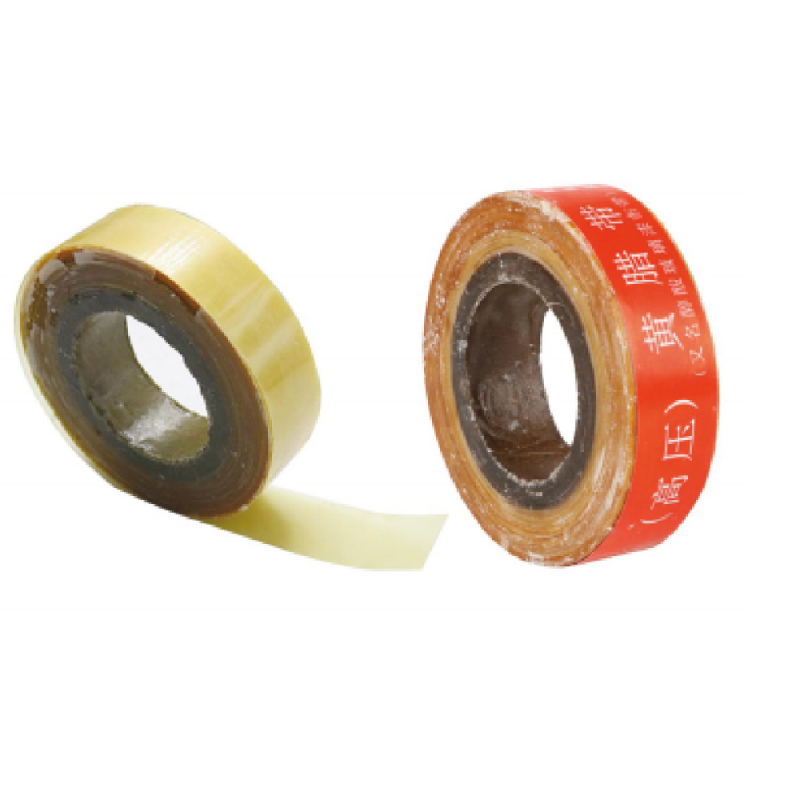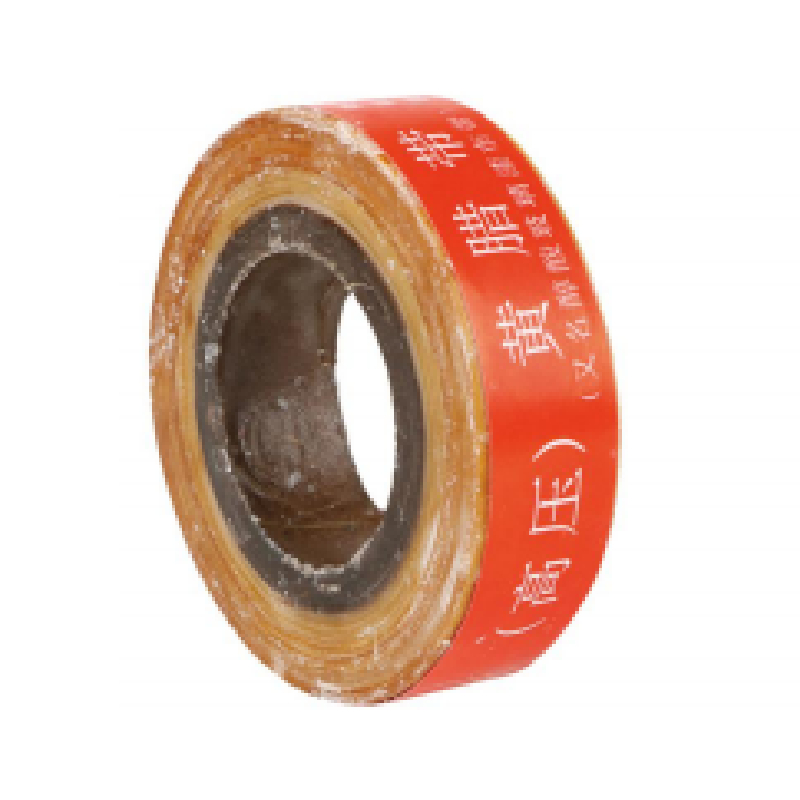As electrical systems continue their rapid transformation, advanced insulation solutions such as cambric tape and Fiberglass Yellow Varnished Insulating Tape have become crucial components in ensuring safety, efficiency, and durability. This comprehensive analysis explores the latest industry trends, manufacturing intricacies, and application scenarios for varnished cambric tape, fiberglass insulating tape, and their derivatives, offering both technical depth and real-world value.

Industry Overview & Growth Trends: cambric tape and Fiberglass Insulation
The global market for cambric tape and fiberglass insulating solutions is projected to reach $635 million by 2028 (MarketsandMarkets, 2023), growing at a CAGR of 6.1%. Key drivers include surging electrification in infrastructure, rapid expansion of renewable energy, and stringent regulatory mandates for electrical safety (ISO 9001, ANSI C37).
Varnished cambric tape and fiberglass tapes for electrical insulation excel as high-temperature, high-dielectric, and high-durability options in power generation, petrochemical, and transformer manufacturing.
| Parameter | Varnished Cambric Tape | Fiberglass Insulating Tape | Typical Competitor Tape |
|---|---|---|---|
| Material | Pure cotton cambric fabric, electrical grade varnish | Woven E-glass fiberglass, class H varnish | PVC or polyester film, rubber adhesive |
| Temperature Class | Class B (130°C) | Class H (180–200°C) | Class A/B (80–130°C) |
| Dielectric Strength | 2–3 kV/mm | 4–8 kV/mm | 1–2 kV/mm |
| Tensile Strength | 70 N/cm | 180 N/cm | 35–60 N/cm |
| Water Absorption | <7% | <0.5% | 2%–12% |
| Standards Met | IEC 60454, ANSI C37 | IEC 60454, UL 510, ISO 9001 | RoHS, ASTM D1000 |
| Lifespan (Ambient Use) | 8–12 years | 15+ years | 5–8 years |
| Main Applications | Transformers, switchgears, wiring harness | Motors, generators, cable wrapping | General insulation, bundling |
Application Scenarios: Where cambric tape Excels
Cambric tape, specifically in varnished variants, shines in settings demanding flexibility, moderate thermal endurance, and cost-efficiency—notably:
- Power transformer coil wrapping
- Control panel cable harnessing
- Rotating machinery and stator layer insulation
- Retrofitting classic equipment with modern insulation
In high-temperature, chemical-prone, or harsh-industrial environments, fiberglass insulating tapes (Class H) are preferred due to superior thermal aging resistance and mechanical robustness. Industries such as petrochemicals, metallurgical processing, renewable power, and marine installations now predominantly specify fiberglass tape for electrical insulation per UL 510 and IEC 60085 certification standards.

Manufacturing Process Explained: From Cambric Tape to Fiberglass Yellow Varnished Insulating Tape
(Premium cambric cotton/fiberglass yarn, resin selection)
(Precision weaving or fiberglass slitting, CNC looms)
(Solventless resin dip, multi-coat)
(Controlled 120–170°C, full crosslink)
(ISO 9001 QA testing, precision slitting width ±0.3mm)
(Vacuum-sealed, batch lot traceability, shelf-life control)
- Cambric tape uses long-staple cotton fabric for enhanced elasticity, treated with electrical-grade alkyd varnish for moisture resistance and dielectric stability.
- Fiberglass tape deploys corrosion-resistant E-glass strands and high-gloss varnish, yielding Class H thermal properties and non-flammability (UL 510).
- All tapes undergo ISO 9001 standardized batch testing (dielectric, tensile, aging) and adhere to ANSI dimensional tolerances.
Product Focus: Fiberglass Yellow Varnished Insulating Tape—Technical Specifications & Competitive Edge
| Property | Spec (Typical) | Test Method | Industry Standard |
|---|---|---|---|
| Base Material | Woven E-glass fiberglass | ASTM D579 | IEC 60454 |
| Thickness | 0.13–0.18 mm | ASTM D3652 | IEC 60454 |
| Width | 10–50 mm (±0.3 mm) | Caliper | IEC 60454 |
| Tensile Strength | ≥180 N/cm | ASTM D828 | ISO 527 |
| Dielectric Breakdown | 7.5–8.2 kV/mm | IEC 60243 | IEC 60454 |
| Thermal Class | Class H (180–200°C) | IEC 60085 | UL 510 |
| Varnish Content | ≥34% | Gravimetric | In-house |
| Flame Retardancy | Self-extinguishing | UL 94 V-0 | UL 510 |
Major transformer OEMs report a 23% decrease in coil failure rates and a 17% extension in operational lifetime when switching from traditional cambric tape to Fiberglass Yellow Varnished Insulating Tape. Defect rates in high-humidity zones improved due to the fiberglass tape for electrical insulation’s superior moisture barrier.
In marine cable bed installations, application of varnished cambric tape remains favored for flexibility, but secondary insulation using Class H fiberglass tape resulted in 20% cost reduction in maintenance over 5 years, as per EEP forum discussions.
Visual Data: Performance Advantage of Fiberglass Yellow Varnished Insulating Tape
Competitive Analysis: Leading Manufacturers & Customization Capabilities
| Brand/Manufacturer | Main Tape Types | Certifications | Customization | Notable End-Users | Annual Capacity |
|---|---|---|---|---|---|
| Qiangda Tape | Fiberglass Yellow Varnished Insulating Tape, Cambric Tape | ISO 9001, UL 510 | Width, Length, Core, Varnish Color | State Grid China, Siemens | 12 million m2 |
| 3M | Varnished Cambric Tape, Scotch Glass Cloth Tape | UL, ANSI, ISO | Custom lengths, Special voltage class | ABB, Schneider | 10 million m2 |
| Tesa | Polyester and Fiberglass Insulating Tapes | RoHS, ISO 9001 | Widths, Adhesion grade | GE, Bombardier | 8.5 million m2 |
| Shanghai Yongguan | Fiberglass/Class H Insulation Tape | ISO, CCC | OEM/ODM | Local utilities | 5.8 million m2 |
Customization & Delivery: Meeting Demanding Project Requirements
- Width & Thickness Customization: 8–100mm width, 0.08–0.32mm thickness possible
- Slit Core Selection: Fiber, plastic, reinforced paper (38, 56, 76mm diameter)
- Color/Finish: Yellow, natural white, brown; glossy/matte varnish available
- Print/Branding: Laser printing or ink-stamp batch codes for traceability
- Delivery Lead Time: Standard models in 3–7 days; custom bulk 14–21 days
- MOQ: As low as 100 rolls/custom spec (consult cambric tape supplier)
- Packing: Vacuum-sealed packs, carton or pallet, humidity control ensured
Expert FAQ: Professional Insights on cambric tape & Fiberglass Tape
1. What is the core material of varnished cambric tape?
2. How does fiberglass insulating tape compare to cambric tape in high-temperature stability?
3. Are there international certifications required for these tapes?
4. What are common sizes available for varnish cambric tape?
5. What are typical installation guidelines for these tapes?
6. How is product shelf life and storage handled?
7. What is the main advantage of yellow varnished fiberglass tape over cheaper polyester adhesive tapes?
Quality, Reliability, and Support: EEAT Commitment
Company Profile: Qiangda Tape, a key player in high-reliability electrical tapes, boasts over 16 years' specialization, ISO 9001 & UL510 certification, and serves major power, petrochemical, and machine OEMs in 50+ countries. Product testing is independently verifiable and traceable by batch/lab report.
- Warranty: 12-24 months standard; performance guarantee on validated bulk orders
- Support: Full technical support (application, fault diagnosis, compliance assistance)
- Samples: Free for industrial users, with material traceability
- After-sales: Dedicated engineer support; on-site or remote troubleshooting as needed
- References: Project data sheets, test results, and application notes available on request
Conclusion & References
The evolution of cambric tape and fiberglass insulating solutions illustrates the industry’s shift towards higher performance, greater safety, and more sustainable operations. With advancements in material science and process control, modern tapes like Fiberglass Yellow Varnished Insulating Tape offer exceptional advantages for power, petrochemical, automotive, and marine sectors.
For deep-dive technical discussions, peer industry case analyses, and heat aging test data on electrical insulation tapes, we recommend visiting the following expert platforms:
- Electrical Engineering Portal – Insulation Materials
- IEEE Xplore Digital Library – Insulation Research
- ResearchGate: High-Temp Tape Characteristics
- Qiangda Tape – Official Product Specs
— Electrical Engineering Forum (2024)
-
XIANGFAN Rubber Tape-Ultimate Solutions for All Your Insulation NeedsNewsJun.24,2025
-
XIANGFAN Rubber Tape-Protection for Industrial and Residential ApplicationsNewsJun.24,2025
-
XIANGFAN Rubber Tape: Superior Safety and Sealing for Demanding EnvironmentsNewsJun.24,2025
-
XIANGFAN Rubber Tape: Reliable Solutions for Every Electrical ChallengeNewsJun.24,2025
-
XIANGFAN Electrical & Industrial Tape: Powering Reliability Across IndustriesNewsJun.24,2025
-
XIANGFAN Electrical & Industrial Tape: Excellence in Every ApplicationNewsJun.24,2025
